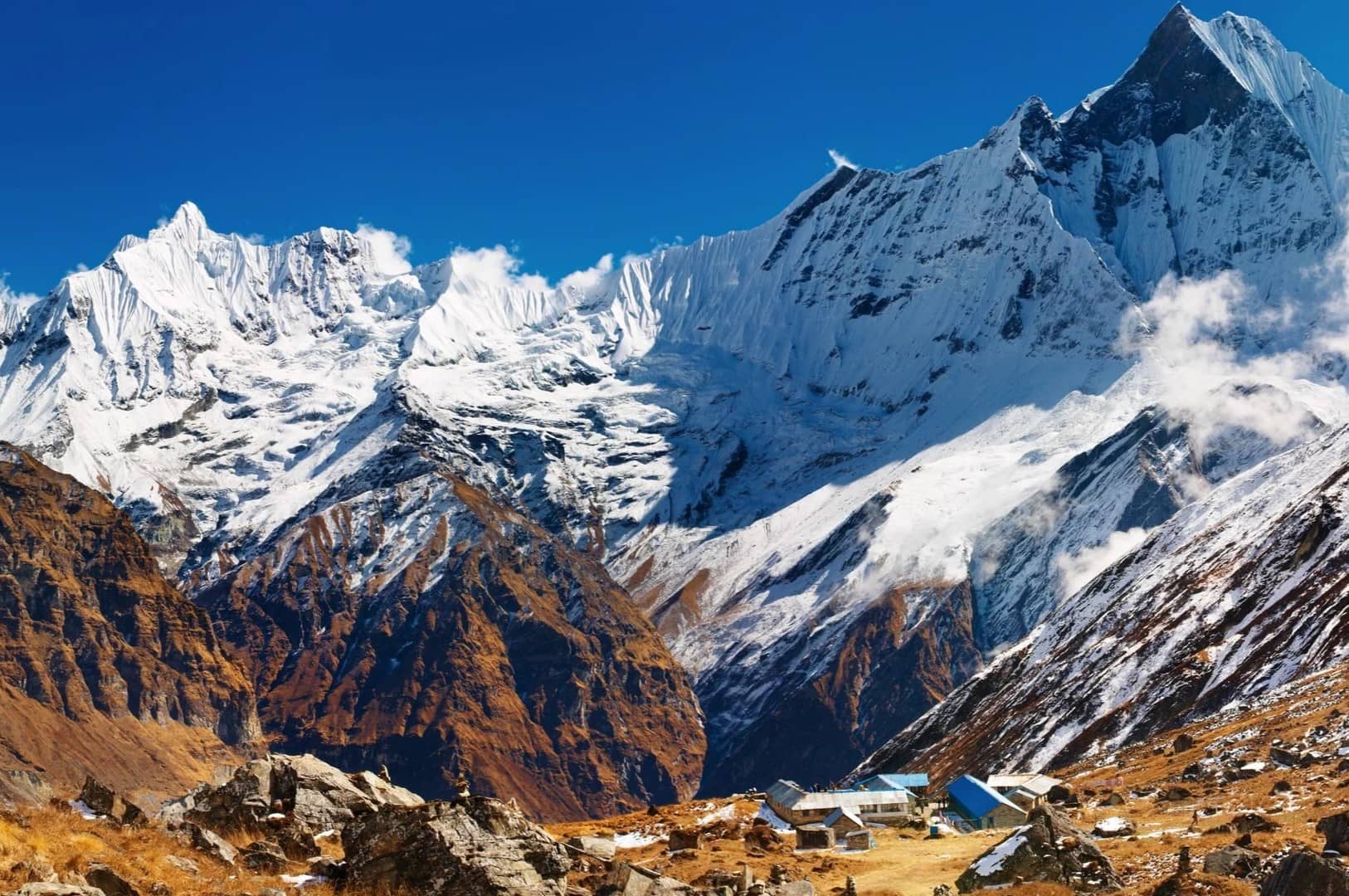
The Himalayan Mountains, often referred to as the "Roof of the World," are a majestic and awe-inspiring natural wonder that captivates the imagination of people around the globe. Stretching across five countries – India, Nepal, Bhutan, China, and Pakistan – these towering peaks are shrouded in mystery and adventure. From the snow-capped summits to the lush valleys below, the Himalayas hold a wealth of fascinating secrets waiting to be discovered.
In this article, we will delve into 10 captivating and little-known facts about the Himalayan Mountains. From their geological significance to their cultural and ecological importance, these facts will shed light on the remarkable features that make the Himalayas a truly extraordinary part of our planet. So, fasten your seatbelts and get ready to embark on an exhilarating journey through the Himalayan wonderland!
Key Takeaways:
- The Himalayan Mountains are a hub of adventure and home to diverse wildlife, making them a hotspot for thrill-seekers and nature enthusiasts alike.
- The Himalayas, with their towering peaks and cultural richness, are a UNESCO World Heritage site, attracting adventurers and researchers while safeguarding their natural and cultural significance.
The Himalayan Mountains are Home to the World's Highest Peaks
Stretching across five countries – India, Nepal, Bhutan, China, and Pakistan – the Himalayas boast an impressive collection of the planet's highest peaks, including the renowned Mount Everest.
The Himalayas are Still Growing
Due to the ongoing collision between the Indian and Eurasian tectonic plates, the Himalayan mountain range is still rising at an estimated rate of 5mm per year.
The Himalayas are Home to Diverse Flora and Fauna
The Himalayan region is teeming with a rich variety of flora and fauna, including elusive snow leopards, majestic Bengal tigers, and exotic Himalayan blue poppies.
The Himalayas are a Source of Major Rivers
Several of Asia's most important rivers, such as the Ganges, Brahmaputra, and the Indus, originate from the Himalayan glaciers, providing water for millions of people.
The Himalayas are a Hub for Adventure Seekers
The Himalayas offer a plethora of thrilling activities, from trekking and mountaineering to paragliding and white-water rafting, attracting adventurers from around the globe.
The Himalayas are a Cultural Melting Pot
The Himalayan region is a melting pot of diverse cultures, languages, and traditions, with vibrant festivals and religious celebrations adding to its unique tapestry.
The Himalayas are a Spiritual Haven
Considered sacred by numerous religions, the Himalayas are dotted with ancient temples, monasteries, and meditation retreats, drawing spiritual seekers and pilgrims.
The Himalayas are Prone to Earthquakes and Avalanches
The Himalayan region is highly seismically active, experiencing frequent earthquakes and avalanches due to the tectonic forces at play.
The Himalayas are a Hotspot for Climate Change Research
The Himalayan glaciers are highly sensitive to climate change, making them a focal point for scientific study on the impact of global warming.
The Himalayas are a UNESCO World Heritage Site
Recognized for their outstanding universal value, the Himalayan mountain range has been designated as a UNESCO World Heritage site, safeguarding its natural and cultural significance.
The Himalayan Mountains, spanning over 1,500 miles and encompassing an array of ecosystems, are a breathtaking marvel of nature. This majestic mountain range is home to the world's highest peaks, including the iconic Mount Everest, standing tall at 29,032 feet. As the collision between the Indian and Eurasian tectonic plates persists, the Himalayas continue to rise, shaping the landscape and captivating the imagination of adventurers and researchers alike.
The region's diverse flora and fauna, from elusive snow leopards to vibrant Himalayan blue poppies, thrive in this unique habitat. Moreover, the Himalayas serve as the source of major rivers, sustaining millions of people across Asia. Adventure enthusiasts flock to the Himalayas for trekking, mountaineering, and a myriad of adrenaline-pumping activities, while the region's rich cultural tapestry and spiritual significance draw pilgrims and seekers from around the world.
However, the Himalayas also face challenges, including the threat of earthquakes and avalanches due to their seismic activity. With the impact of climate change becoming increasingly evident, the Himalayan glaciers have become a focal point for scientific research. Despite these challenges, the Himalayan Mountains remain a UNESCO World Heritage site, revered for their natural and cultural significance. As a testament to their timeless allure, the Himalayas continue to inspire and captivate all who venture into their majestic embrace.
Conclusion
The Himalayan Mountains are not only a majestic natural wonder but also a vital part of Earth's ecosystem. They play a crucial role in regulating the global climate, providing a habitat for diverse species, and serving as a source of freshwater for millions of people. The unique geological and ecological features of the Himalayas make them a subject of fascination and study for scientists, adventurers, and nature enthusiasts alike. Exploring the Himalayas reveals a world of breathtaking beauty and scientific marvels that continue to inspire awe and wonder in all who encounter them.
FAQs
What makes the Himalayan Mountains unique?
The Himalayas are unique due to their towering peaks, diverse ecosystems, and significant impact on regional and global climates. They are home to a rich array of flora and fauna, making them a biodiversity hotspot.
How were the Himalayan Mountains formed?
The Himalayas were formed through the collision of the Indian and Eurasian tectonic plates, leading to the uplift of the region and the creation of the world's highest mountain range, including Mount Everest.
Was this page helpful?
Our commitment to delivering trustworthy and engaging content is at the heart of what we do. Each fact on our site is contributed by real users like you, bringing a wealth of diverse insights and information. To ensure the highest standards of accuracy and reliability, our dedicated editors meticulously review each submission. This process guarantees that the facts we share are not only fascinating but also credible. Trust in our commitment to quality and authenticity as you explore and learn with us.
